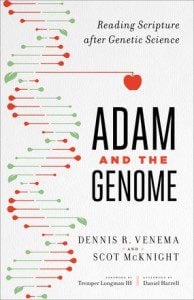 Inspiring story of the week: Sarah Reinertsen:
Inspiring story of the week: Sarah Reinertsen:
As a child, I didn’t get to play a lot of sports in school. I was often excluded from games on the playground and struggled to keep up with my friends in gym class. This was due to the fact that I didn’t actually know how to run.
I was born with a tissue disorder that ultimately led to the amputation of my left leg above the knee when I was 7 years old. During rehab, I received several sessions of physical therapy. However, this instruction did not include running. More than 30 years later, this lack of training is still the norm.
After my amputation, I joined my peers back at school. However, because the basis of almost every sport is running, I was at a serious disadvantage. I often dreaded gym glass and would daydream of having two “real” legs so I could play with everyone else.
My perspective all changed one weekend when my father, an avid roadrunner, dragged my brother and I to the Aspire 10K road race on Long Island. My father had signed up for this particular event because he had learned that an amputee runner from Manhattan was going to be there. As my brother and I watched from the sidelines, cheering everyone on, I caught a glimpse of this woman on a prosthetic leg running fast and smoothly. I stood there mesmerized as she ran past me so strong and gracefully. I was now 11, yet this was the first time I had ever seen an amputee run.
I rushed to the finish line to meet this amazing woman. Her name was Paddy Rossbach and, just like me, she had her leg amputated as a young girl. Paddy was now in her 40s and had run several marathons, including the New York City Marathon. I knew that if Paddy could run, I could learn to run, too. I didn’t have to be on the sidelines, I could be in the race like Paddy, my Dad, and everyone else. I had a role model.
Paddy introduced me to her coach, David Balsley, a physical therapist who volunteered his time to teach me how to run. It took me multiple sessions with David to figure out how to run, but, once I mastered it, I felt strong and powerful. For the first time in my life, I felt whole.
Nearly three decades later, I am still running.
If you didn’t see Chaplain Mike’s post on the church calendar, check it out:
Last Sunday I gave five primary reasons why I think it advantageous for Christians to form their spiritual lives — their walk with God through Christ — around the liturgical year.
- It enables us to live in God’s story.
- It keeps the main thing the main thing.
- It recognizes that one’s calendar forms one’s life.
- It links personal spirituality with worship, family, and community.
- It provides a basis of unity and common experience for Christians everywhere.
Three big awards in science.
Majoring in fear — Mark Shiffman’s nice essay. [HT: JS]
Three steps in de-radicalizing:
It is one thing to observe that de-radicalization can occur, and quite another to understand how it came about. Simply put, de-radicalization depends on three Ns: need, narrative and network.
The first step toward de-radicalization involves recognizing the needs of jihadists, which shape their motives, beliefs and reality. Often we only see what we want to see and believe what we want to believe. Valid arguments, however strong, are can be utterly unpersuasive if they run counter to our needs.
The second step is to devise a narrative that acknowledges a person’s need for relevance and respect and provides a nonviolent means to address that need. That is why current de-radicalization programs in Muslim countries, or countries with significant Muslim populations, employ much more than theological arguments against violence. Programs in Saudi Arabia, Singapore and Iraq address detainees’ need for significance by providing them with vocational education, finding them jobs and, in some cases, even wives.
The third step is to recognize that the social network in which militants are embedded is crucial to their radicalization — and de-radicalization. People’s attitudes and beliefs are firmly anchored in the shared reality of their group. Radicalization occurs in a social context that is shaped by family, friends and charismatic leaders. De-radicalization cannot take place in a social vacuum, either.
Parents packing lunches for kids — not all that healthy, folks.
It might be time to reconsider the lunchbox.
A new study (pdf) carried out by researchers at Virginia Tech concluded that preschoolers and kindergartners tend to eat healthier lunches when the food is chosen by their school, not their parents. The study, which surveyed more than 1,300 lunches at three schools in Virginia, found that parents frequently pack things like chips, sweets, and sugary drinks—all of which are not allowed under the National School Lunch Program.
“I wasn’t expecting there to be such a strong difference between school meals and lunches packed by parents,” said Alisha Farris, one of the study’s authors. “We thought that parents would send lunches that reinforced the sort of healthy habits we hope they are trying to establish at home.”
Parents, it turns out, appear to do just the opposite. More than 60 percent of meals packed at home had one dessert (nearly 20 percent had two or more); just under 60 percent had savory snacks, like chips; and roughly 40 percent had a soda or sugar-added juice. School meals, meanwhile, were more likely to contain fruits, vegetables, naturally sweetened juices, and milk.
I have long been a fan of Von Hildebrand, and Carl Trueman does that man’s central opposition to Hitler a good turn because Von Hildebrand had a sound moral compass.
Emily Esfahani Smith on what makes for a “master” vs. “disaster” relationship:
In one study from 2006, psychological researcher Shelly Gable and her colleagues brought young adult couples into the lab to discuss recent positive events from their lives. They psychologists wanted to know how partners would respond to each other’s good news. They found that, in general, couples responded to each other’s good news in four different ways that they called: passive destructive, active destructive, passive constructive, and active constructive.
Let’s say that one partner had recently received the excellent news that she got into medical school. She would say something like “I got into my top choice med school!”
If her partner responded in a passive destructive manner, he would ignore the event. For example, he might say something like: “You wouldn’t believe the great news I got yesterday! I won a free t-shirt!”
If her partner responded in a passive constructive way, he would acknowledge the good news, but in a half-hearted, understated way. A typical passive constructive response is saying “That’s great, babe” as he texts his buddy on his phone.
In the third kind of response, active destructive, the partner would diminish the good news his partner just got: “Are you sure you can handle all the studying? And what about the cost? Med school is so expensive!”
Finally, there’s active constructive responding. If her partner responded in this way, he stopped what he was doing and engaged wholeheartedly with her: “That’s great! Congratulations! When did you find out? Did they call you? What classes will you take first semester?”
Among the four response styles, active constructive responding is the kindest. While the other response styles are joy-killers, active constructive responding allows the partner to savor her joy and gives the couple an opportunity to bond over the good news. In the parlance of the Gottmans, active constructive responding is a way of “turning toward” your partners bid (sharing the good news) rather than “turning away” from it. [HT: JS]
Austin Hatch, enough said.
The average American consumes the equivalent of 19.5 teaspoons a day in added sugars, but there are no federal guidelines recommending a limit. SugarScience suggests the same limits advocated by the American Heart Association and the World Health Organization: no more than 9 teaspoons a day for men and no more than 6 teaspoons a day for women.
But knowing how much sugar you’re eating can be challenging. Here are some key facts from the SugarScience website.
- Added sugar is hiding in 74 percent of packaged foods. (Proposed changes to the nutrition label would change this by including a separate line for added sugars.)
- Fructose, a common type of sugar, can damage your liver more than other kinds of sugar — just like too much alcohol can.
- One 12-ounce can of soda a day can increase your risk of dying of heart disease by one-third.
The site also includes tips on concrete steps that people can take to cut down on sugar. Themost straightforward way is to stop drinking sugar-sweetened drinks, like sodas, sports drinks and energy drinks, the researchers say. More than one-third of added sugar in the diet comes from sugary drinks.
Top 10 archaeological discoveries.
James Carroll on Pope Francis and Jesus:
SOMETIMES, when I kneel alone in a pew in the far back shadows of a church, face buried in my hands, a forbidden thought intrudes: You should have left all this behind a long time ago. The joyful new pope has quickened the affection even of the disaffected, including me, but, oddly, I sense the coming of a strange reversal in the Francis effect. The more universal the appeal of his spacious witness, the more cramped and afraid most of his colleagues in the hierarchy of the Roman Catholic Church have come to seem.
It is easy to love Pope Francis for his resounding defense of the poor, his simplicity, his evident large heart. But the moral grandeur of his personal triumph throws into stark relief the continuing pettiness of the institution over which he presides, a pettiness that inevitably seeks to impose itself on him. What magic, actually, can Francis’s singular magnanimity work on the church’s iron triangle of bureaucracy, dogma and male power?
The intruding voice in my head keeps asking, for example, why has Francis, too, joined in the denigration of American nuns?
Why is the culture of clerical immunity that unleashed a legion of priest-rapists being protected instead of dismantled?
….
Most emphatically, that reform must be centered in a critical rereading of the Gospel texts, so that the misremembered anti-Jewish Jesus can give way to the man as he was, and to the God whom he makes present in the lives of all who cannot stop seeing more than is before their eyes.Such retrieval of the centrality of Jesus can restore a long-lost simplicity of faith, which makes Catholic identity — or the faith of any other church — only a means to a larger communion not just with fellow Jesus people, but with humans everywhere. All dogmas, ordinances and accretions of tradition must be measured against the example of the man who, acting wholly as a son of Israel, eschewed power, exuded kindness, pointed to one whom he called Father, and invited those bent over in the shadowy back to come forward to his table.
It was the table, I suddenly recall, that brought me here in the first place. The lights come up, the people arrive, and I stand.
45 uses of lemons — no kidding.
A lawyer fighting the violent hits to the head in football:
Luckasevic’s files include medical and neurological assessments of his clients that would have been used if the case had moved toward a trial. He sent me one of them, with the name redacted. The player had a lengthy N.F.L. career and suffered blows to the head “too numerous to recall.” He had been knocked unconscious in games but never hospitalized. Now in his late 50s, he suffers chronic headaches, has stopped taking medications prescribed to alleviate them because they were ineffective, can’t concentrate long enough to hold down a job or maintain relationships and lives alone in the house he grew up in, where he passes his time watching TV. He has developed a tremor in his left arm and leg and is having difficulty swallowing.
The settlement class includes only retired players, not current ones. In an interview with The New Yorker earlier this year, President Obama, an avid Chicago Bears fan, said that if he had sons, he would not let them play football but he would remain a fan of the sport. “At this point, there’s a little bit of caveat emptor,” he said of the current N.F.L. players. “These guys, they know what they’re doing. They know what they’re buying into. It is no longer a secret.” When I talked to Luckasevic about the president’s remarks, he said: “But my guys didn’t know. That’s the whole point. They didn’t assume this risk.”
When he was a child, Luckasevic said, Sundays in his household were for “church and football.” His family had a couple of Steelers season tickets at about the 40-yard line, behind the visitors bench. “They were actually too low, but it was sort of neat because you were so close to the players.”
His father would always take him or his brother. When it was his turn, Luckasevic would take his camera, and he has snapshots of some of the men he now represents. He no longer watches any football. He has lost his taste for the game.











